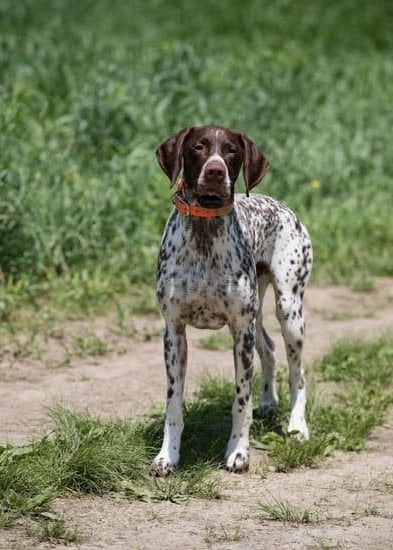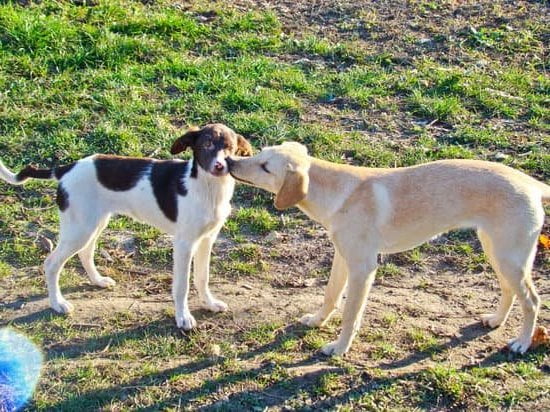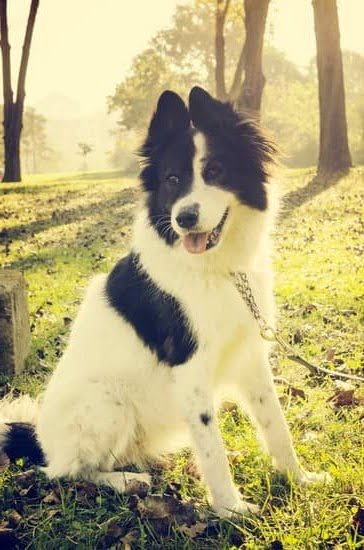Are you struggling with potty training your furry friend? It can be frustrating when your dog is unable to hold their poop, especially if accidents happen indoors. In this article, we will explore effective methods on how to train your dog to hold poop. Understanding your dog’s pooping behavior is the first step in successful potty training.
Dogs follow a natural schedule when it comes to eliminating waste, and as pet owners, it’s essential to recognize and understand these patterns. By gaining insight into why dogs poop when they do, you’ll be better equipped to teach them how to control their bowel movements effectively. From there, incorporating proper potty training techniques will become much more manageable.
Creating a consistent schedule for bathroom breaks is crucial in training your dog to hold poop. This routine helps regulate your dog’s system and ensures that they know when it’s appropriate to relieve themselves. Additionally, positive reinforcement and rewarding good behavior provide motivation for your furry companion to learn and adapt to the desired habits.
Stay tuned for practical tips on managing diet and exercise, using crate training effectively, and troubleshooting common challenges during the potty training process. Remember, patience and persistence are key in successfully teaching your dog how to hold poop-a skill that benefits both you and your loyal companion.
The Importance of Proper Potty Training
Proper potty training is essential for dogs to learn bowel control and hold their poop when necessary. Without proper training, dogs may struggle with controlling their bowels, leading to accidents in the house or other undesirable behavior. Here are some key points to consider when potty training your dog:
- Understanding Your Dog’s Pooping Behavior: Before starting any training, it’s important to understand your dog’s pooping behavior. This includes recognizing signs that indicate your dog needs to go, such as sniffing around or circling a specific area.
- Creating a Consistent Schedule for Bathroom Breaks: Establishing a consistent schedule for bathroom breaks can help your dog learn when and where they should go. This routine helps them develop a sense of when it’s appropriate to relieve themselves.
- Positive Reinforcement and Reward-Based Training Techniques: Using positive reinforcement, such as treats or praise, can encourage good behavior and help your dog associate holding their poop with positive outcomes.
With the right approach, patience, and consistency, you can effectively teach your dog how to hold their poop until an appropriate time and place. Keep in mind that every dog is different, so it’s essential to tailor your training methods to fit your individual pet’s needs. By focusing on proper potty training, you can help your dog develop the necessary bowel control for a happy and well-behaved furry companion.
Creating a Consistent Schedule for Bathroom Breaks
Creating and sticking to a consistent schedule for bathroom breaks is essential in training your dog to hold poop. Dogs, like humans, thrive on routine and predictability, so establishing set times for bathroom breaks can help them develop better bowel control.
Establishing Routine
Start by observing your dog’s natural patterns of behavior when it comes to pooping. Take note of the times of day when they typically need to go and use that information to create a schedule. For example, most dogs need to relieve themselves first thing in the morning, after meals, and before bedtime. By aligning bathroom breaks with these natural cues, you can set your dog up for success in holding their poop.
Consistency Is Key
Once you have established a schedule, it is crucial to stick to it as closely as possible. Consistency reinforces the routine and helps your dog understand when they are expected to go outside. Even on weekends or during vacations, try to maintain the same schedule as much as possible. This will help your dog develop better bladder and bowel control over time.
Patient Persistence
It’s important to remember that establishing a consistent bathroom schedule takes time and patience. Some dogs may adapt quickly while others may take longer to grasp the routine. Be persistent in adhering to the schedule and providing positive reinforcement when your dog successfully holds their poop until the scheduled break. With time, patience, and consistency, your dog will learn to hold their poop more effectively.
Positive Reinforcement and Reward-Based Training Techniques
When it comes to training a dog to hold its poop, positive reinforcement and reward-based training techniques are essential. Dogs respond well to positive feedback, so using rewards can be highly effective in encouraging the behavior you want to see.
Here are some effective positive reinforcement and reward-based training techniques for teaching your dog to hold their poop:
– **Use treats:** Whenever your dog successfully holds its poop and goes outside instead, be sure to offer a treat as a reward. This will help your dog associate the behavior of holding its poop with receiving something they enjoy.
– **Provide praise:** In addition to giving treats, make sure to offer plenty of verbal praise and affection when your dog successfully holds its poop. Dogs thrive on attention from their owners, so be sure to shower them with praise whenever they do the right thing.
– **Use a clicker:** Clicker training can be incredibly effective in reinforcing good behavior. Whenever your dog successfully holds its poop, use a clicker to mark the behavior as desirable, followed by a reward.
By consistently using these positive reinforcement techniques, you can help your dog understand what is expected of them when it comes to holding their poop until they are outside. Remember that patience and persistence are key when it comes to training, so stick with it and remain consistent in your approach.
Using Crate Training to Teach Bowel Control
Crate training can be an effective tool in teaching your dog to hold their poop. Dogs are den animals by nature, and a crate or kennel can mimic the feeling of a safe and secure space. This makes it less likely for them to eliminate inside the crate, as dogs typically avoid soiling their living quarters.
When using crate training for bowel control, it’s important to choose the right size crate for your dog. The crate should be large enough for your dog to stand up, turn around, and lay down comfortably, but not too large that they have enough space to designate one area as a bathroom spot. It’s also crucial to introduce the crate gradually, making it a positive and enjoyable place for your dog through positive reinforcement.
During the initial stages of crate training, it’s essential to keep a consistent schedule for potty breaks and not leave your dog in the crate for an extended period without a bathroom break. Gradually increasing the duration that your dog spends in the crate will also help teach them bowel control while preventing accidents. Using this method alongside other positive reinforcement techniques can effectively teach your dog to hold their poop.
| Aspect | Description |
|---|---|
| Importance of Crate Size | The size of the crate should be large enough for comfort but small enough to discourage elimination inside. |
| Gradual Introduction | Introducing the crate slowly with positive associations helps make it an inviting space. |
| Scheduled Bathroom Breaks | Maintaining regular potty breaks while increasing time spent in the crate promotes good bladder and bowel control. |
Paying Attention to Signs of When Your Dog Needs to Go
Observe Behavioral Cues
Understanding your dog’s body language and behavior can give you important clues as to when they need to relieve themselves. Some common signs that your dog may need to go include pacing, whining, circling, sniffing the ground, or suddenly becoming restless. By paying attention to these cues, you can proactively take your dog outside before accidents happen indoors.
Establish a Routine
Creating a consistent schedule for bathroom breaks is essential in helping your dog hold their poop. Take note of the times when your dog typically needs to go, such as after meals, upon waking up in the morning, and before bedtime. By establishing a routine and taking your dog out at these key times each day, you are helping them learn when it’s appropriate to go potty.
Use Verbal Commands
Teaching your dog verbal cues can also be helpful in signaling when it’s time to go potty. By using a specific command like “go potty” or “do your business” each time you take them outside to relieve themselves, you are reinforcing the association between the command and the action. Over time, your dog will begin to understand what is expected of them when they hear these verbal cues.
By paying close attention to your dog’s behavior, establishing a routine for bathroom breaks, and using verbal commands, you can effectively train them to hold their poop until an appropriate time and location. This process requires patience and consistency but with time and effort, most dogs will learn bowel control through these training techniques.
Managing Diet and Exercise to Support Bowel Control
A crucial aspect of training your dog to hold their poop is managing their diet and exercise routine. Providing a well-balanced diet that is appropriate for your dog’s size, age, and breed can play a significant role in supporting bowel control.
Ensure that your dog’s food contains high-quality ingredients and the right balance of fiber to promote digestive health. Additionally, regular exercise can help regulate your dog’s bowel movements, so be sure to provide plenty of opportunities for physical activity.
Incorporate a feeding schedule into your dog’s routine to help predict when they will need to go potty. By feeding your dog at consistent times each day, you can also establish a predictable pattern for when they will need bathroom breaks.
Avoid giving your dog table scraps or foods that are known to cause digestive issues, as this can disrupt their bowel control. It’s important to consult with a veterinarian to determine the best diet plan for your specific dog based on their individual needs and health considerations.
In addition to managing your dog’s diet, regular exercise is essential for maintaining bowel control. Engage in daily walks, play sessions, or other forms of physical activity to keep your dog healthy and active. Not only does exercise support overall wellbeing, but it also aids in maintaining regular bowel movements. By paying attention to both diet and exercise, you can create an environment that supports proper bowel control and aids in the training process.
Troubleshooting Challenges and Dealing With Setbacks
Training a dog to hold their poop can sometimes be challenging, and setbacks are not uncommon. One common challenge is when a dog has accidents inside the house even after they have been properly trained. This could be due to various reasons such as a change in routine, stress, illness, or anxiety. It’s important to remain patient and consistent and not to scold the dog for accidents, as this could create further setbacks in the training process.
Another challenge that owners may face is when their dog seems unwilling or unable to hold their poop for longer periods of time, even after following all the training techniques. In such cases, it may be necessary to consult with a professional dog trainer or veterinarian to rule out any underlying medical issues that could be causing the problem.
If your dog is having frequent accidents despite efforts to train them to hold their poop, it’s important not to give up. Consistency and persistence are key in this training process, and setbacks should be expected. By remaining patient and continuing to use positive reinforcement techniques, most dogs eventually learn to hold their poop effectively.
| Common Challenges | Solutions |
|---|---|
| Accidents despite proper training | Remain patient and consistent; avoid scolding the dog |
| Inability or unwillingness to hold poop | Consult with a professional trainer or vet; remain persistent in training techniques |
| Frequent accidents | Continue using positive reinforcement; do not give up on the training process |
The Importance of Patience and Persistence in the Training Process
In conclusion, training a dog to hold poop requires a combination of understanding your dog’s behavior, consistency in scheduling bathroom breaks, positive reinforcement techniques, crate training, and paying attention to your dog’s cues. It is crucial to understand that patience and persistence are key factors in the training process.
It is important to remember that every dog is unique and will respond differently to training. Some dogs may pick up on the training quickly, while others may take more time and effort. Patience is essential in this process as forcing a dog to hold their poop or punishing them for accidents can be counterproductive and lead to anxiety or fear around bathroom habits. Every setback should be approached with understanding and persistence in order to maintain progress.
With consistent training and positive reinforcement, most dogs can be successfully trained to hold their poop until an appropriate time and place. By being patient and persistent throughout the process, you can help your furry friend develop good bowel control habits that will benefit both them and you in the long run. Remember, Rome wasn’t built in a day, so be patient and stay committed to the training process for the best results.
Frequently Asked Questions
How Long Should a Dog Be Able to Hold Its Poop?
The length of time a dog can hold its poop varies depending on several factors such as age, size, health, and diet. Generally, adult dogs can hold their poop for 8-10 hours, while puppies may need to go every 2-4 hours.
It’s important to take your dog’s individual needs into account and not force them to hold it for too long.
How Do I Stop My Dog From Pooping in Certain Areas?
To prevent your dog from pooping in certain areas, consistent training and supervision are key. You can use positive reinforcement when they go in the designated spot and redirect them if they try to go elsewhere. Avoid punishment as it may create fear or anxiety in your dog.
How Do I Keep My Dogs Poop Picked Up?
Keeping your dog’s poop picked up is essential for both hygiene and social responsibility. Make it a habit to pick up after your dog immediately using a poop bag and dispose of it properly in a designated bin or waste receptacle.
Additionally, regularly inspect your yard or outdoor spaces where your dog spends time to ensure no waste is left behind.

Welcome to the blog! I am a professional dog trainer and have been working with dogs for many years. In this blog, I will be discussing various topics related to dog training, including tips, tricks, and advice. I hope you find this information helpful and informative. Thanks for reading!





